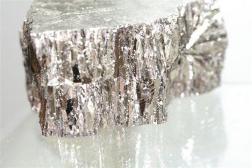Electronics Assembly
From diagnostic and imaging equipment to hand-held monitoring devices, printed circuit boards are in almost all of the equipment used by doctors, hospitals and clinics.
- Smaller components in smaller devices require solder materials that provide good electrical contacts with no bridging, excellent wetting and good throughput.
- In order to achieve maximum functionality in increasingly smaller spaces, the use of flexible circuit boards is increasing, providing new challenges for electronic assembly.
- Connectors need to be securely soldered to the circuit board to withstand constant use.
Product Characteristics
Paste
- Spherical, low-oxide powder available in various mesh sizes
- Pb-free, Pb-containing, AuSn and indium-containing alloys
- No-clean, water or solvent cleanable flux vehicles
- Flexible packaging and quantities to support manufacturing requirements
Wire
- Diameters available in SnAg and AuSn down to 0.001″
- Pb-free, Pb-containing, AuSn and indium-containing alloys
- Solid core and flux core
Fluxes
- Flux #2 and #3 for removing tenacious oxides from metals such as Nininol and stainless steel
- No-clean and water soluble Tacflux
Preforms
- A large die library of washers, squares, discs, frames and special shapes
- InTEGRATED™ Preforms used for fast placement of multiple washers at once
- Pb-free, Pb-containing, AuSn and indium-containing alloys
- Flux coatings
- Small sizes, variable thicknesses to achieve optimum volume
- Flexible packaging and quantities to support manufacturing requirements
Spheres
- Alloys: SAC and Pb-contained alloys as well as indium-contained
- Standard sizes are 300 to 1270 microns. Other sizes may be available on request.
- Tolerances as tight as ±5 microns for uniform alignment
| Soldering Process | Description | Challenges | Our Recommended Products |
|---|---|---|---|
| Surface Mount Reflow | Standard process for PCB assembly | Flexible circuits and smaller boards and components require no bridging and excellent wetting |
|
| Laser Soldering | Non-contact; highly controlled heating | Identifying the proper power and timing to reduce voiding and flux spatter and optimize wetting |
|
| IR Soldering | Can be used for smaller packages such as chip resistors, capacitors and SOICs and high temperature soldering | Larger components may impede heating of smaller components due to shadowing effect |
|
| Induction Soldering | Localized, uniform heating | Requires proper set up and design with a repeatable process to introduce the parts being soldered |
|
| Vacuum Soldering | Reduction in pressure allows voids in solder to escape prior to reflow, creating much lower voiding in finished solder joint | Batch process may be too slow for high volume manufacturing. Requires proper set up, design and material selection |
|
| Vapor Phase Soldering | Vapor chamber allows for uniform heating across the entire assembly | Fast wetting forces may cause tombstoning with common chip and resistors, which can be minimized with preheat |
|
| Manual Soldering | Using a heat gun, soldering iron or other hand-held heat source to reflow the solder | Operator-to-operator solder volume variance |
|
Source: Indium Corporation, Clinton, NY








